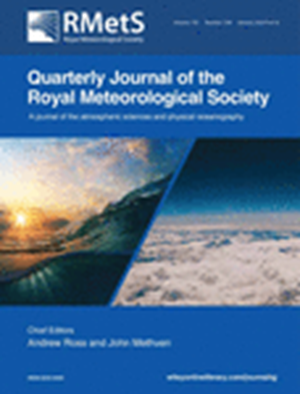利用机器学习改进对意大利北部和中部极端降水的预测
IF 2.9
3区 地球科学
Q2 METEOROLOGY & ATMOSPHERIC SCIENCES
引用次数: 0
摘要
准确预测强降水事件是业务气象服务的主要目标之一。如今,随着全球变暖的迅速发展,这一任务变得更加重要。随着时间的推移,数值天气预报模型不断改进,提供了动态集合的不确定性估计。然而,直接降水预报仍然具有挑战性。机器学习工具的普及为混合预报方法铺平了道路,物理模型、事件统计和面向用户的后处理得到了最佳结合。在此,我们将介绍一个基于随机森林(RF)管道的特定链,该链专门用于识别导致极端降水的有利天气条件,并随后将极端降水分为预定义的类型。该应用以意大利北部和中部为测试平台,但可无缝扩展到其他地区和时间尺度。该系统被称为 MaLCoX(预测极端降水条件的机器学习模型),每天在意大利艾米利亚-罗马涅大区气象服务机构(ARPAE Emilia-Romagna)运行。MalCoX 以 ARCIS 的网格化高分辨率降水数据集为目标真相,使用欧洲中期天气预报中心(ECMWF)过去 20 年的再预报数据集作为输入预测因子进行训练。我们的研究表明,在训练期足够长的情况下,大尺度信息与直接模式输出的优化组合可提高中程极端天气的概率预报精度。此外,通过具体方法,我们还提供了一种有用的诊断方法,向预报员传达了造成极端气象事件的基本物理故事情节。本文章由计算机程序翻译,如有差异,请以英文原文为准。
Improving forecasts of precipitation extremes over northern and central Italy using machine learning
The accurate prediction of intense precipitation events is one of the main objectives of operational weather services. This task is even more relevant nowadays, with the rapid progression of global warming which intensifies these events. Numerical weather prediction models have improved continuously over time, providing uncertainty estimation with dynamical ensembles. However, direct precipitation forecasting is still challenging. Greater availability of machine‐learning tools paves the way to a hybrid forecasting approach, with the optimal combination of physical models, event statistics, and user‐oriented postprocessing. Here we describe a specific chain, based on a random‐forest (RF) pipeline, specialised in recognising favourable synoptic conditions leading to precipitation extremes and subsequently classifying extremes into predefined types. The application focuses on northern and central Italy, taken as a testbed region, but is seamlessly extensible to other regions and time‐scales. The system is called MaLCoX (Machine Learning model predicting Conditions for eXtreme precipitation) and is running daily at the Italian regional weather service of ARPAE Emilia‐Romagna. MalCoX has been trained with the ARCIS gridded high‐resolution precipitation dataset as the target truth, using the last 20 years of the European Centre for Medium‐Range Weather Forecasts (ECMWF) reforecast dataset as input predictors. We show that, with a long enough training period, the optimal blend of larger‐scale information with direct model output improves the probabilistic forecast accuracy of extremes in the medium range. In addition, with specific methods, we provide a useful diagnostic to convey to forecasters the underlying physical storyline which makes a meteorological event extreme.
求助全文
通过发布文献求助,成功后即可免费获取论文全文。
去求助
来源期刊
CiteScore
16.80
自引率
4.50%
发文量
163
审稿时长
3-8 weeks
期刊介绍:
The Quarterly Journal of the Royal Meteorological Society is a journal published by the Royal Meteorological Society. It aims to communicate and document new research in the atmospheric sciences and related fields. The journal is considered one of the leading publications in meteorology worldwide. It accepts articles, comprehensive review articles, and comments on published papers. It is published eight times a year, with additional special issues.
The Quarterly Journal has a wide readership of scientists in the atmospheric and related fields. It is indexed and abstracted in various databases, including Advanced Polymers Abstracts, Agricultural Engineering Abstracts, CAB Abstracts, CABDirect, COMPENDEX, CSA Civil Engineering Abstracts, Earthquake Engineering Abstracts, Engineered Materials Abstracts, Science Citation Index, SCOPUS, Web of Science, and more.

 求助内容:
求助内容: 应助结果提醒方式:
应助结果提醒方式:


